| 1 | Rough earth snake |
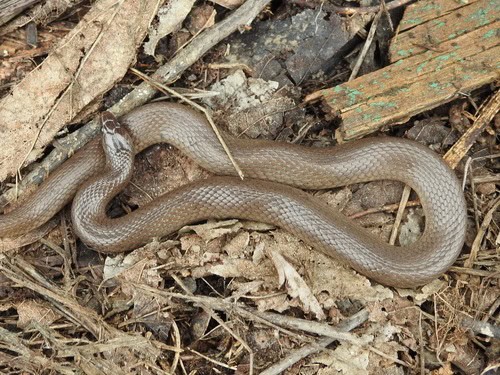
The most earthworm-specialised snake in the USA, and one of the top worldwide. Rough earth snakes reach a record of just 34.8cm, which means that they must specialise in smaller prey. But they don’t bother with ants, slugs, snails or spiders. Studies reveal that their diet consists exclusively of earthworms, including one study on 45 individual snakes.
Their habitats make this earthworm prey easy to acquire. Rough earth snakes appear in grassy clearings, pinewoods, the moist edges of streams, and virtually always under cover objects, whether it’s rotting logs, sheet metal, or clumps of dying grass. Rough earth snakes lack venom or sharp fangs; the teeth they do have are weak and unable to hurt humans. Their strategy is to seize earthworms, rapidly reposition them, then slurp them down like spaghetti.
Rough earth snakes range from southern Texas in the south to Virginia in the northeast. Their only problem is that they commonly gather together at once. 30 were once dug up together in Richmond, Virginia, so they might be forced to compete with each other for the juiciest, tastiest earthworms.
| 2 | Greater green snake |
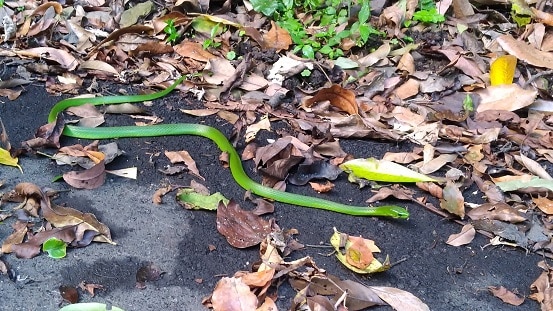
An almost completely green snake (except for the eyes) which darts around, fleeing whenever humans stray too close, and particularly inhabits southern China, Hong Kong and Taiwan. Greater green snakes (Ptyas major) are harmless to humans and stick to the ground, while occasionally climbing branches.
This species is quite long for a snake that primarily hunts earthworms. Rough earth snakes peak at 34.8cm, while Ptyas major reaches a maximum of 130cm. But earthworms in Hong Kong and Taiwan aren’t the same as those in Kansas. They’re host to earthworms of the Megascolecidae family, the longest of which grows to the brute length of 2 metres. Hong Kong has plenty in the Amynthas genus, which easily reach 15cm, sometimes 20cm. Some members of the Amynthas family are even dubbed snake worms, because of their length.
Greater green snakes stick to areas with soft soils, such as grassy clearings between woods, playparks and meadows. Unlike the Chinese cobra, alleyways in central Hong Kong are poor for them, as they don’t have a magical ability to dig through concrete.
| 3 | Northwestern garter snake |
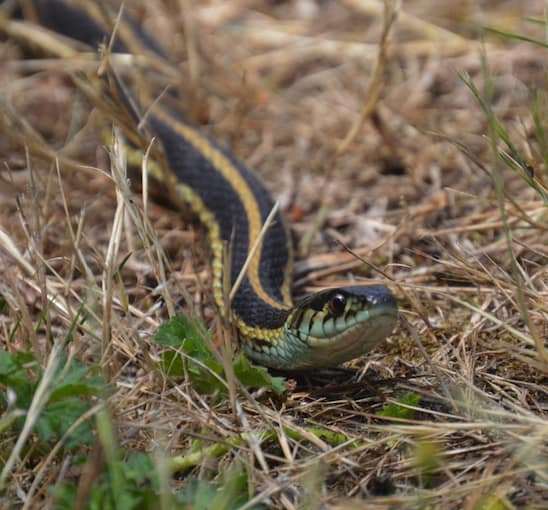
Garter snakes are mainly an ally of gardeners, due to their liking for slugs and earthworms which nibble on garden plants. There’s over 15 members in the USA and 30 members worldwide. Terrestrial garter snakes eat the most mammals, while common garter snakes gravitate heavily towards frogs. Northwestern garter snakes (Thamnophis ordinoides) might be the most focussed on small, grubby creatures.
A study from 1978 found that earthworms and slugs comprised their diet exclusively. There were no amphibians, no reptiles, no mammals, and certainly no birds. This study was conducted on Vancouver Island, where the northwestern garters overlapped with terrestrial and common garter snakes, which also ate earthworms but not as heavily.
Northwestern garter snakes are smaller than average, at a maximum of 95cm and average of just 40cm. They’re mainly a terrestrial species, shunning water, unlike common garter snakes. They often appear in grassy forest clearings, or occasionally wooded areas themselves. Their name is accurate, as Thamnophis ordinoides is found on the northwest US coast, in Washington state, Oregon, extreme northwest California, plus far southwestern Canada.
| 4 | Brown banded watersnake |
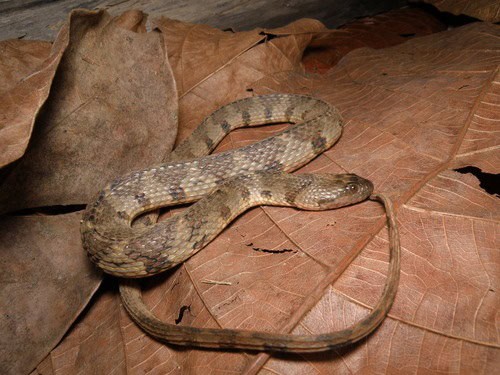
The brown-banded watersnake is found across the entire Amazon region, including Brazil, Peru and Suriname. It’s especially common in the island nation of Trinidad and Tobago. This species is most common in riverside vegetation and shallow pools within forests, where they move at night, often submerging into water, which they navigate easily thanks to eyes positioned high on their head.
Brown-banded watersnakes (Helicops angulatus) use ambush strategies, sitting and waiting by muddy shores. They have a varied diet including fish, amphibians, occasionally reptiles. However, they’re one of the few South American snake species confirmed specifically to prey on giant earthworms within the Glossoscolecidae family, a group which can exceed 1 metre.
In May 2004, on a tributary of the Rio Verde, a Helicops angulatus was spotted pulling a giant earthworm out of the mud along the shore. It eventually succeeded in sucking its entire body into its stomach. It was later identified as a member of the Rhinodrillus earthworm group, and while its length wasn’t confirmed, the earthworm was over 1cm in diameter. Later, a male also regurgitated a giant earthworm, of the Glossoscolecidae family.
| 5 | Brazilian burrowing snake |

Brazilian burrowing snakes (Gomesophis brasiliensis) are the only member of the Gomesophis family, and inhabit southeastern Brazil, including the outskirts of Sao Paulo. They’re brown from a distance but with several subtle stripes up close, and inhabit forest and field alike, but especially the edges of swamps and ponds, essentially moist areas where slimy, grubby creatures are more common.
Brazilian burrowing snakes average at 30-40cm and are a snake which goes about their business without bothering humans. The same can’t be said about the slimy local worms though. This is a specialised earthworm-eater which never feels any inclination towards the scaly delights of lizards or the furry flavours of mice.
Have you ever put your keys under a rock in your back garden, and lifted it up later to find earthworms everywhere? In Sao Paulo, it could be a Brazilian burrowing snake and several earthworms. Brazilian burrowing snakes have various defense mechanisms, including jabbing strikes, gaping their mouth widely, and making their neck into an S-coil. They also bury themselves in the shoreline mud to escape, but there’s a good chance they’ll find an earthworm snack while they’re down there.
| 6 | Lined snake |
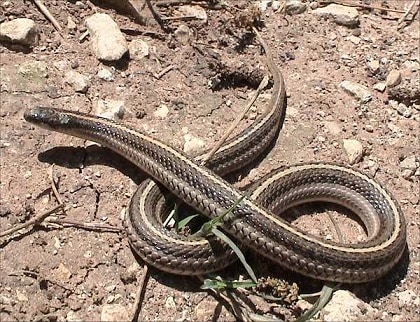
Lined snakes (Tropidoclonion lineatum) live in shallow layers of soil in wide sweeping grasslands, typically in Kansas, northern Texas and Oklahoma. This habitat means that they have a constant neighbor: earthworms.
The lined snake, which belongs to its own Tropidoclonion family, but is actually an offshoot of the garter snake family, is one of the most heavily earthworm eating species in the United States. Some theorise that they originally ate more slugs and snails, but that the introduction of invasive Lumbricus earthworms gave them an irresistible bounty to feast on, causing them to shun the old prey that they relied on for millions of years.
Lined snakes adore the taste of earthworms. They don’t even require them to be alive. In captivity they’ll happily swallow alive and wriggling earthworms, or gooey pieces of dead earthworm cut into bite sized chunks. If any area is crawling with earthworms, then it’s more likely that lined snakes will be nearby. They’re finely attuned to stalking them, as their nasal systems can detect collagen-like substances produced by earthworms’ bodies.
Lined snakes are shy due to lurking in soil, but are abundant near several large US cities: Kansas City, Tulsa, and especially Dallas and Fort Worth.
| 7 | Atractus elaps |
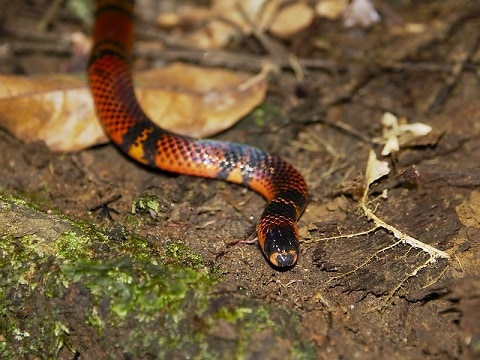
This Amazon species is a coral snake mimic, which will usually cause locals to gather around in fear if it strays out of the forest. However, Atractus elaps lacks any venom – its only weapon is a sharp tail for poking people. Unlike coral snakes, they don’t prey on fellow snakes and reptiles. So far, all food items discovered in their stomachs have been earthworms.
Their strategy is to grab and swallow them, with no venom nor specialised elongated teeth that act as an earthworm jail. However, it’s possible that Atractus elaps can track molecules in their slimy bodies. Actractus elaps is regularly found in rotting logs and tree stumps, where earthworms are likely to appear, so this is a snake with some cunning and intelligence.
Atractus elaps is a snake of the far western Amazon region. They’re most heavily concentrated in eastern Ecuador (east of the Andes). While largely a rainforest snake, they’re a flexible species which appears in adjacent villages, clearings and even people’s houses occasionally. Unlike a Chocoan toad-headed pitviper, they won’t shrivel up and die the second they leave a rainforest.
| 8 | Western forest centipede eater |
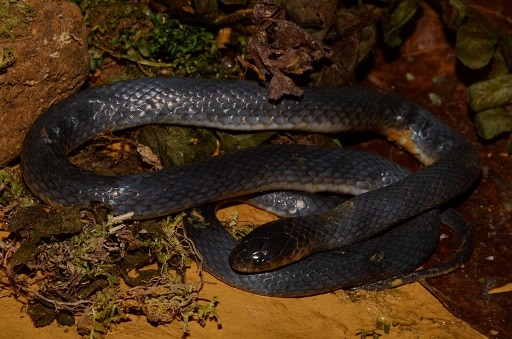
A mysterious central African snake. Little is known about the life and personality of Aparallactus modestus, and nobody seems in any real rush to find out more. In 100 years, our databanks may be just as empty as they are in 2024. But one thing we know is that the Western forest centipede eater (Aparallactus modestus) feeds mainly on earthworms, with a side helping of termites. Its name is totally misleading, as it’s actually a rare member of the 11-strong Aparallactus family not to prey on centipedes.
Aparallactus modestus is usually pure darkness from above, though with a much paler belly when flipped over. They have beady black eyes and a paler chin, sometimes olive-toned. There’s also a slight iridescent sheen to this snake.
You’re very unlikely to meet this snake on a guided tour of Congo rainforest in a comfortable vehicle, and you probably won’t spot one buried on the forest floor even if you do find one. They live a life surrounded by humidity, fallen leaves, ancient forest matter, rummaging around in the mulchiness, and this is perfect for their earthworm-acquiring mission. This species peaks at just 64.5cm (so far).
| 9 | Long-tailed alpine garter snake |
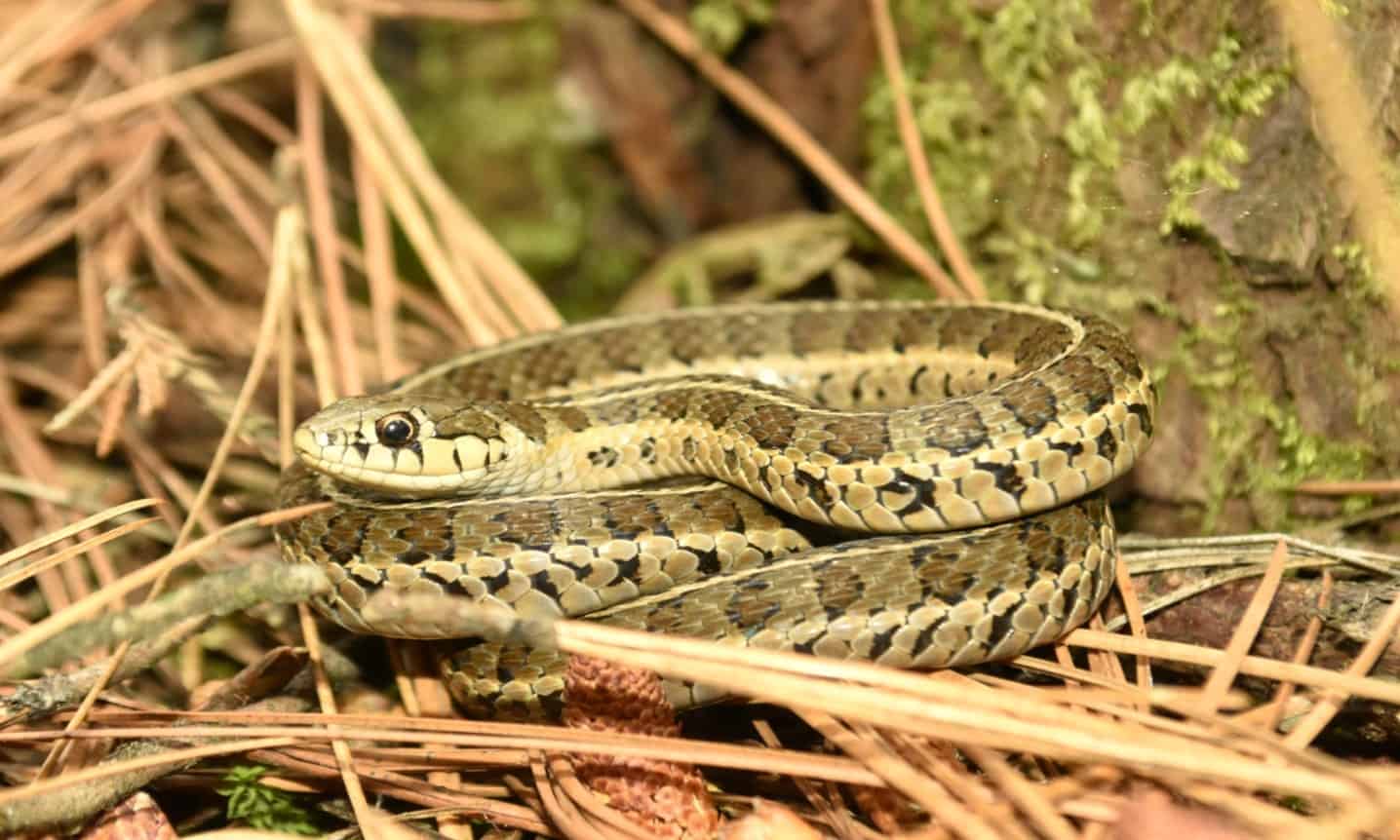
Mexico has 15-20 garter snake species, and they’re just as addicted to earthworms as the US counterparts, with some variation. Perhaps the most earthworm addicted is the long-tail alpine garter snake (Thamnophis scalaris), which resides at altitudes of 2103-4273 metres, including in Jalisco and Veracruz states in the south.
A study from 2009 found that 81% of their diet was earthworms. Juveniles ate earthworms exclusively, while adults kept them, but added vertebrates such as transvolcanic alligator lizards and deer mice.
Long-tail alpine garter snakes have a perfect habitat for seizing their earthworm prey: sweeping grassy fields at high altitudes, often covered with many small mammal holes.
Scientists have stomped around these fields and watched as the garter snakes instinctively fled into these dark holes. It’s easy to imagine one sitting in these dark tunnels and slurping up an earthworm instantly the second it pokes its head out of the tunnel roof in order to investigate what’s going on. Thamnophis scalaris measures 50-60cm, and like most garter snakes, has no power to harm humans.
| 10 | Coral earth snake |
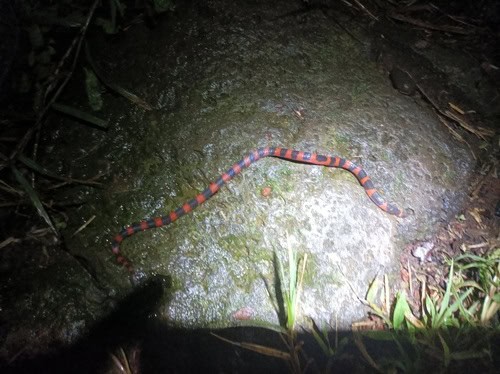
The Geophis snake family has over 50 members, and most are known to prey on earthworms. The coral earth snake (Geophis semidoliatus) has some of the most detailed observations of any earthworm-hunter. This species is harmless to humans and measures 25-30cm (max 41cm) on average. They’re found mainly in the Sierra Madre Oriental of Mexico.
This is the only country they inhabit, yet they’re fairly common within that territory, to the local earthworms’ dismay. In September 2019, scientists were in the city of Xalapa when they spotted a 30cm coral earth snake gripping an earthworm measuring about 10cm. The earthworm had cleverly positioned its upper body between two stones, making it impossible for the snake to suck it down. The struggle didn’t end before the scientists were forced to leave.
In the second observation they spotted a 40cm coral earth snake gripping a 20cm earthworm. This time it succeeded; the earthworm thrashed its body repeatedly, but the snake used a “pterygoid walk”, walking its head and jaws over the slimy meal slowly. When it reached the upper third of the earthworm’s body, it rapidly accelerated until it was fully swallowed. Meanwhile, coral earth snakes are preyed on themselves by variable coral snakes (Micrurus diastema).
